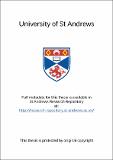Files in this item
A statistical analysis of tactical movement patterns in Association Football
Item metadata
| dc.contributor.author | Ali, Araz H. | en |
| dc.coverage.spatial | 172 p. | en |
| dc.date.accessioned | 2021-04-08T08:59:19Z | |
| dc.date.available | 2021-04-08T08:59:19Z | |
| dc.date.issued | 1986 | |
| dc.identifier.uri | https://hdl.handle.net/10023/21904 | |
| dc.description.abstract | The main purpose of this study was an attempt to reveal more information about types of attacking patterns in association football. Seven types of attacking formation were identified from a total of eighteen league matches. These were analysed using a number of statistical and visual techniques. For set plays, twenty-four matches were analysed using the same statistical and visual techniques as were used for the ordinary attacks. There are, of course, two types of pattern for corner-kicks and throw-ins; one from the right-hand side and the other from the left-hand side of the pitch. For free-kicks, however, there were no obvious patterns. In further analysis, the result showed that there were significant relationships for ordinary attacks, thus: Types of pattern with final actions (significance level = 0.001); final actions with the number of long passes (significance level = 0.02); types of pattern with the number of short passes and dribbling sections (significance level = 0.001 for both). For set plays, it was found that only for cornerkicks were the number of short passes with the final actions statistically significant (significance level = 0.01). Also, the result indicated that the most successful attacking pattern formations in providing shooting and scoring opportunities were 1 and 6. This means that the most successful moves are those which proceed along the length of either wing. Although pattern 2 (an attack initiated close to the centre spot of the pitch, towards the left side line briefly along the wing, and then into the penalty area by a number of passes, and terminated by shooting) succeeded in providing shooting and scoring opportunities, it also resulted in more corner-kicks being awarded. Furthermore, attacks culminating in final action 7 (off-side) have a very high average number of long passes involved within the attack pattern. Generally, the more complex the attacking pattern, the less likely it was to result in potential scoring opportunitie, e.g. pattern 7 (an attack initiated from the middle of the pitch, about halfway between the centre and the left side line, diagonally towards the left side line with a number of short passes, followed by a pass into the penalty area and terminated by shooting). It was found that corner-kicks that included a number of short passes were more successful in providing scoring opportunities, than those that consisted of a single cross into the goal area. | en |
| dc.language.iso | en | en |
| dc.publisher | University of St Andrews | en |
| dc.subject.lcc | GV943.9T7A6 | |
| dc.title | A statistical analysis of tactical movement patterns in Association Football | en |
| dc.type | Thesis | en |
| dc.type.qualificationlevel | Doctoral | en |
| dc.type.qualificationname | MSc Master of Science | en |
| dc.publisher.institution | The University of St Andrews | en |
This item appears in the following Collection(s)
Items in the St Andrews Research Repository are protected by copyright, with all rights reserved, unless otherwise indicated.

